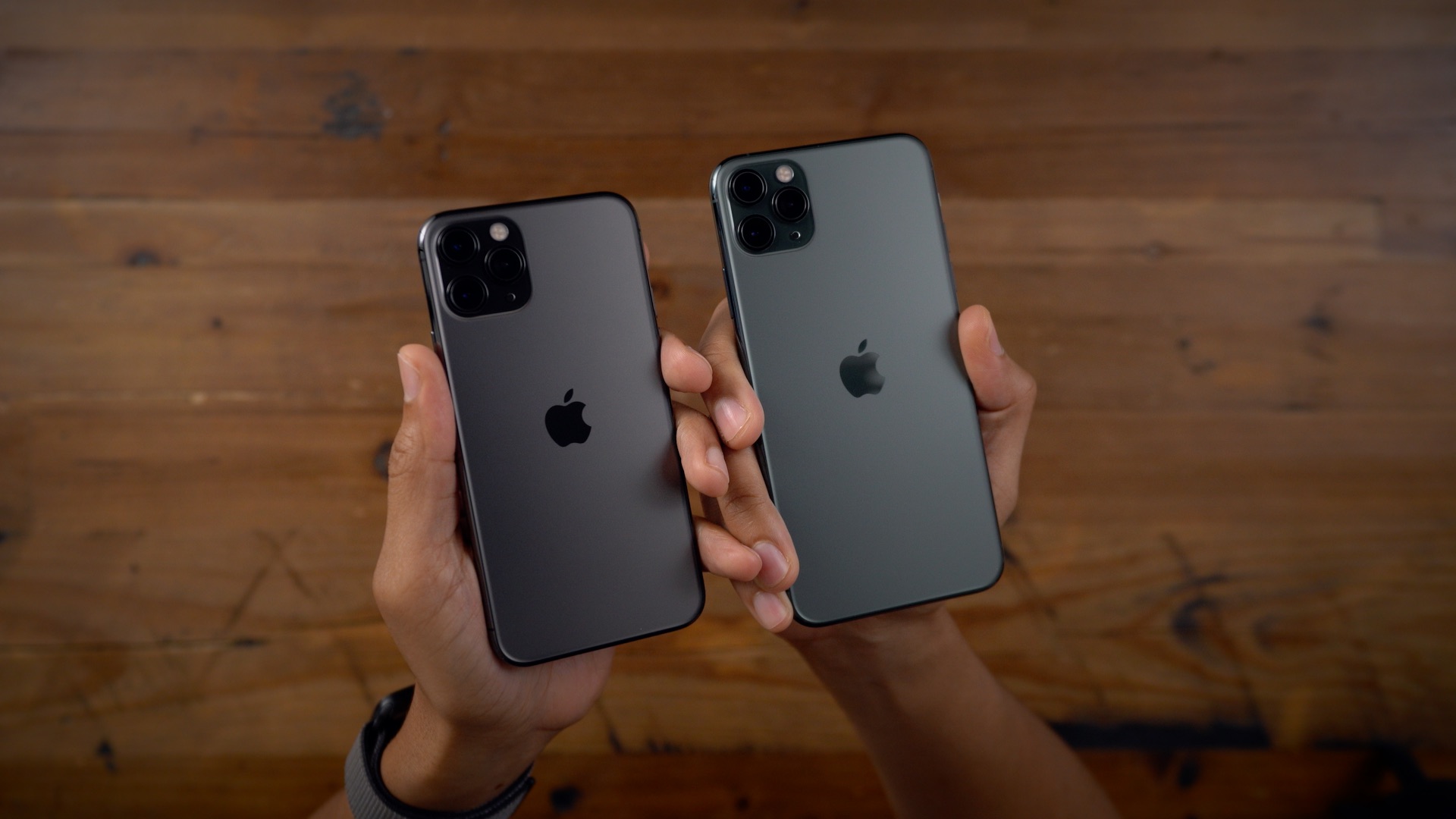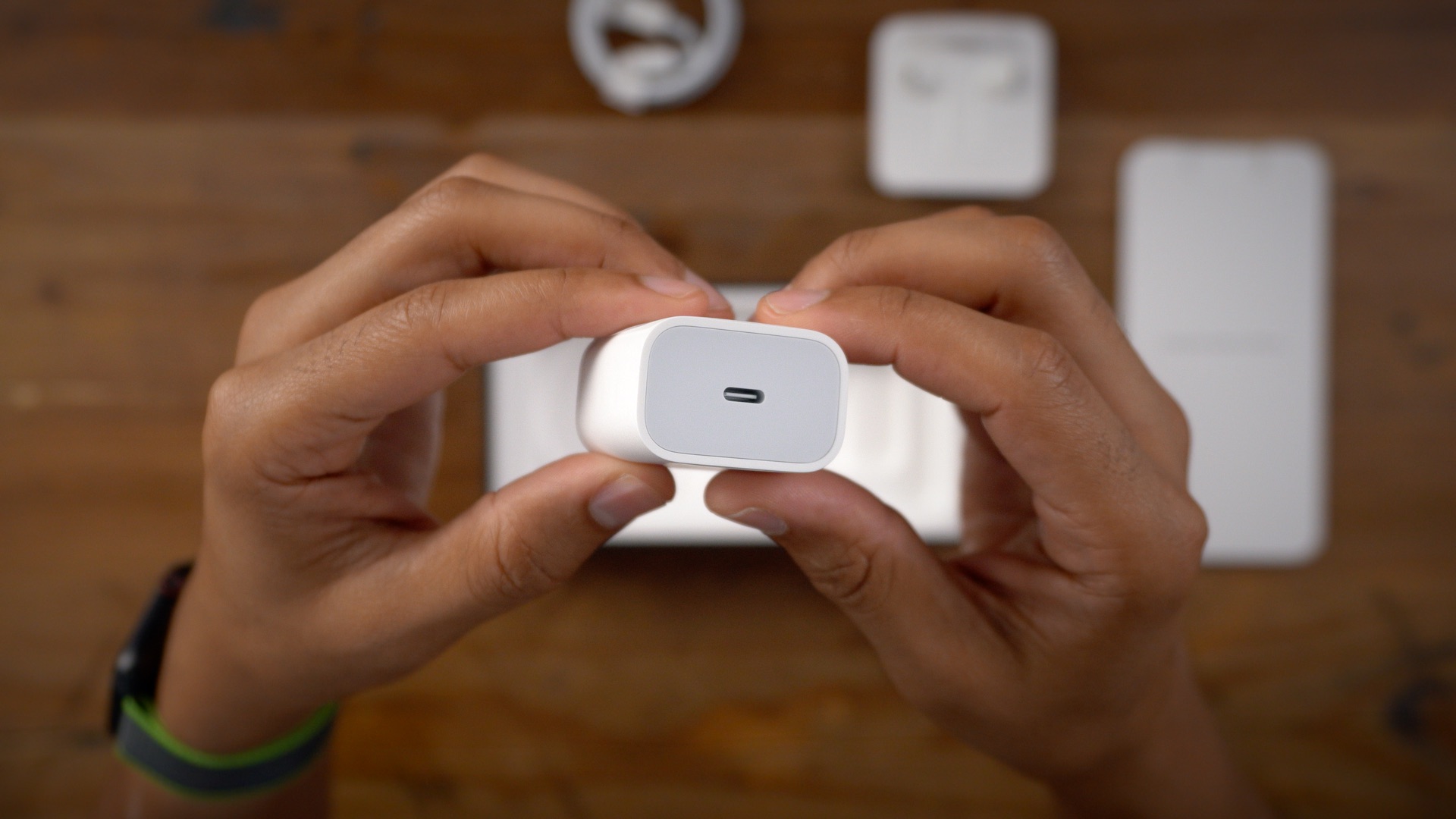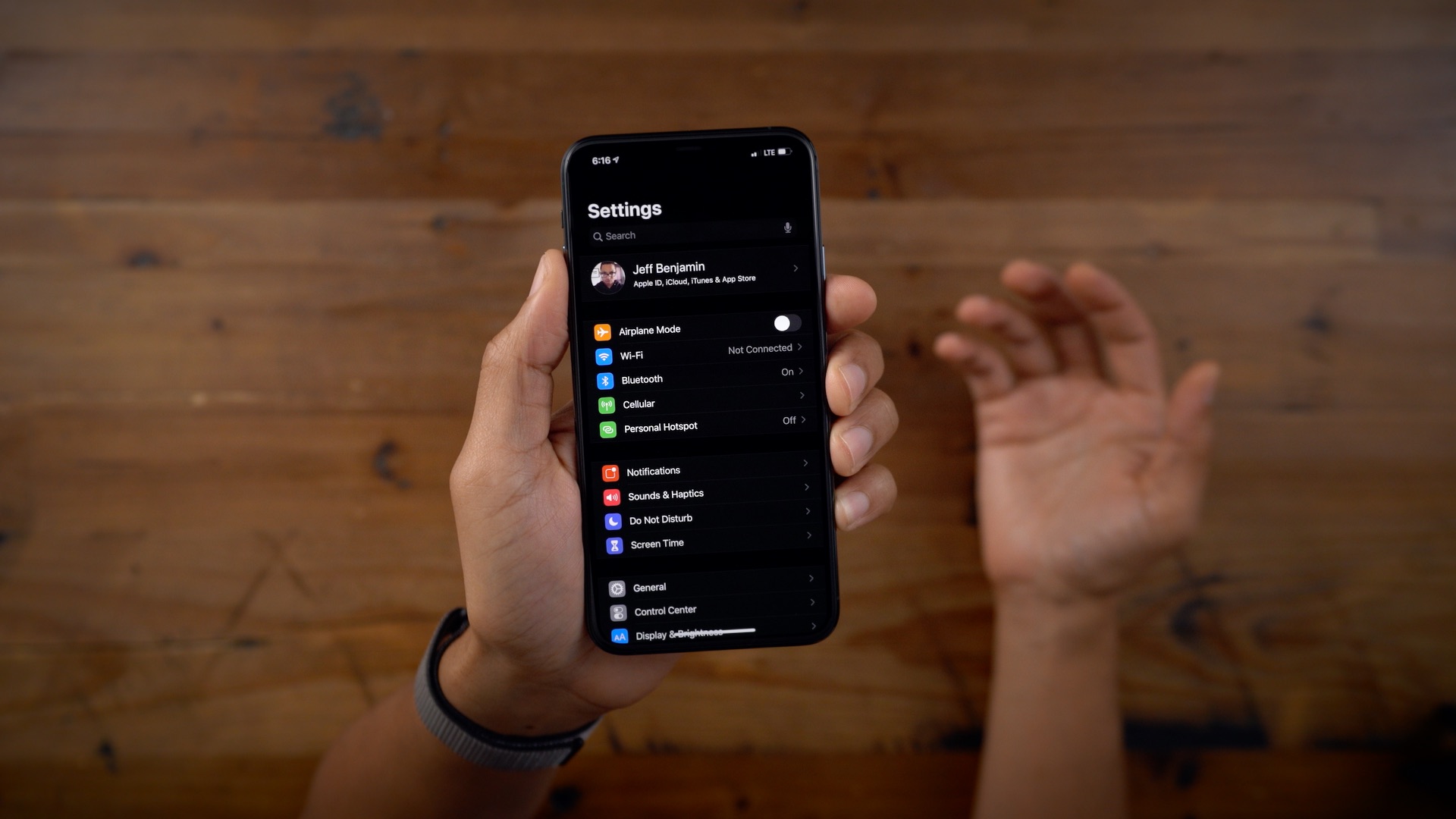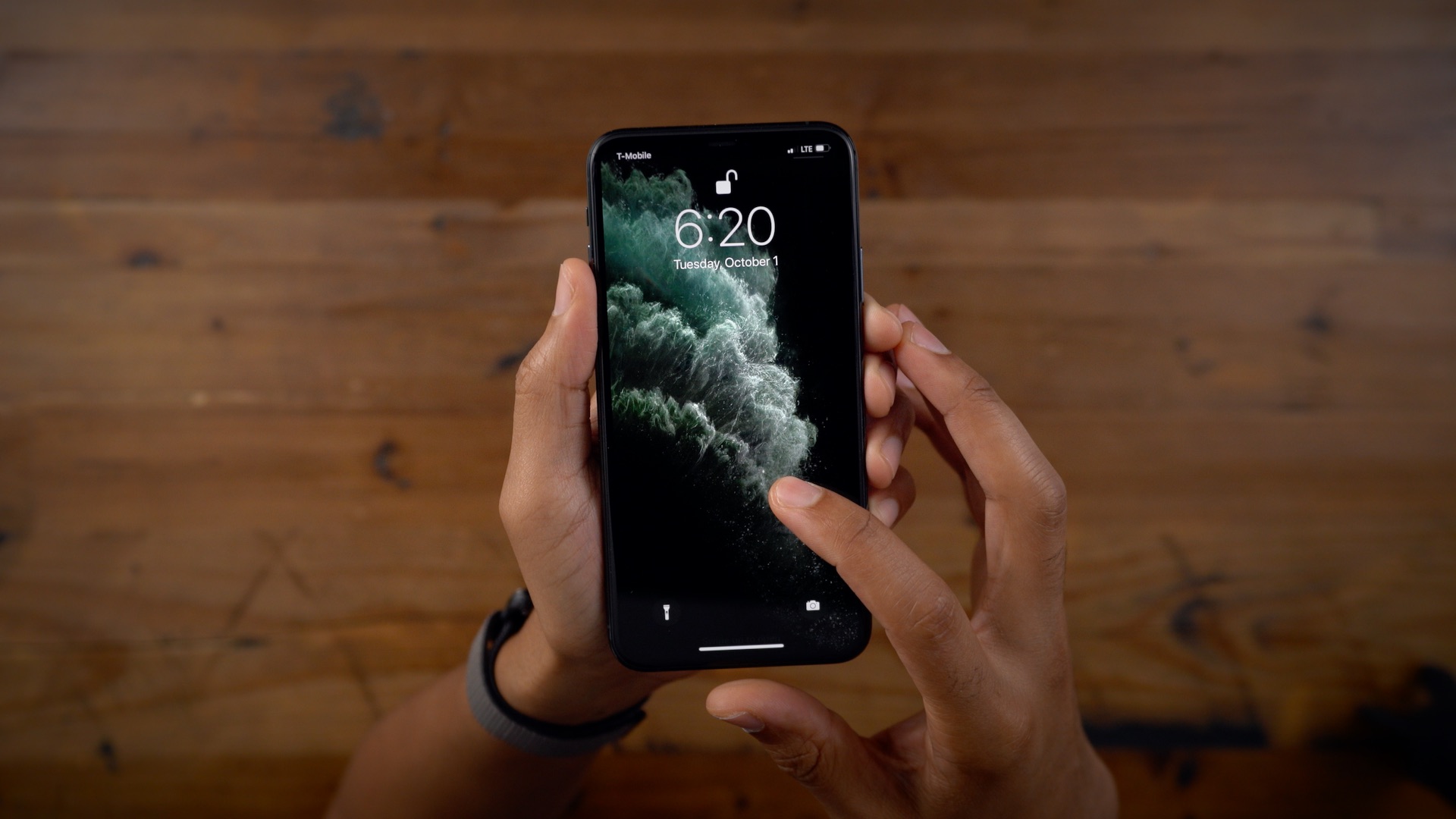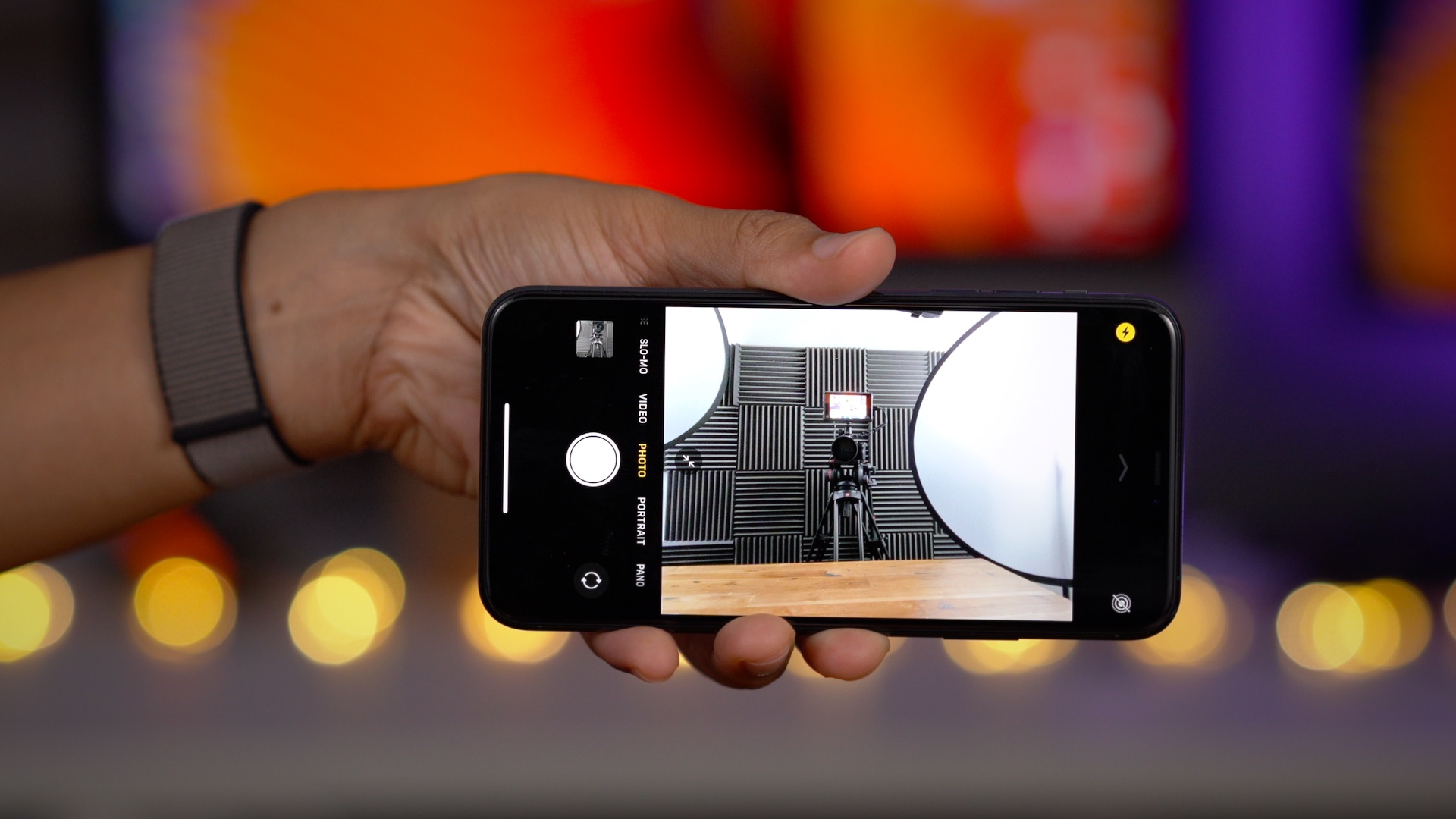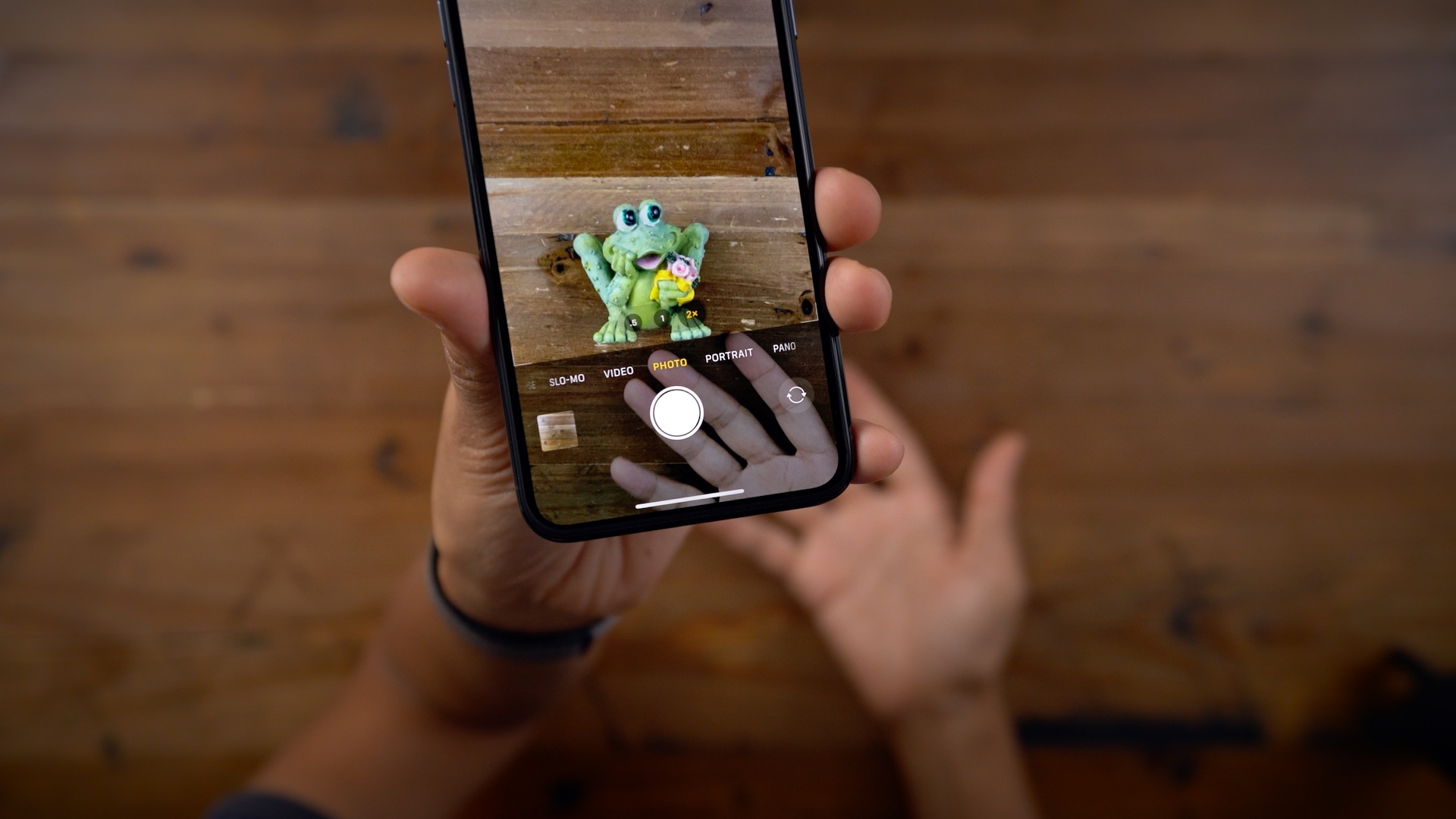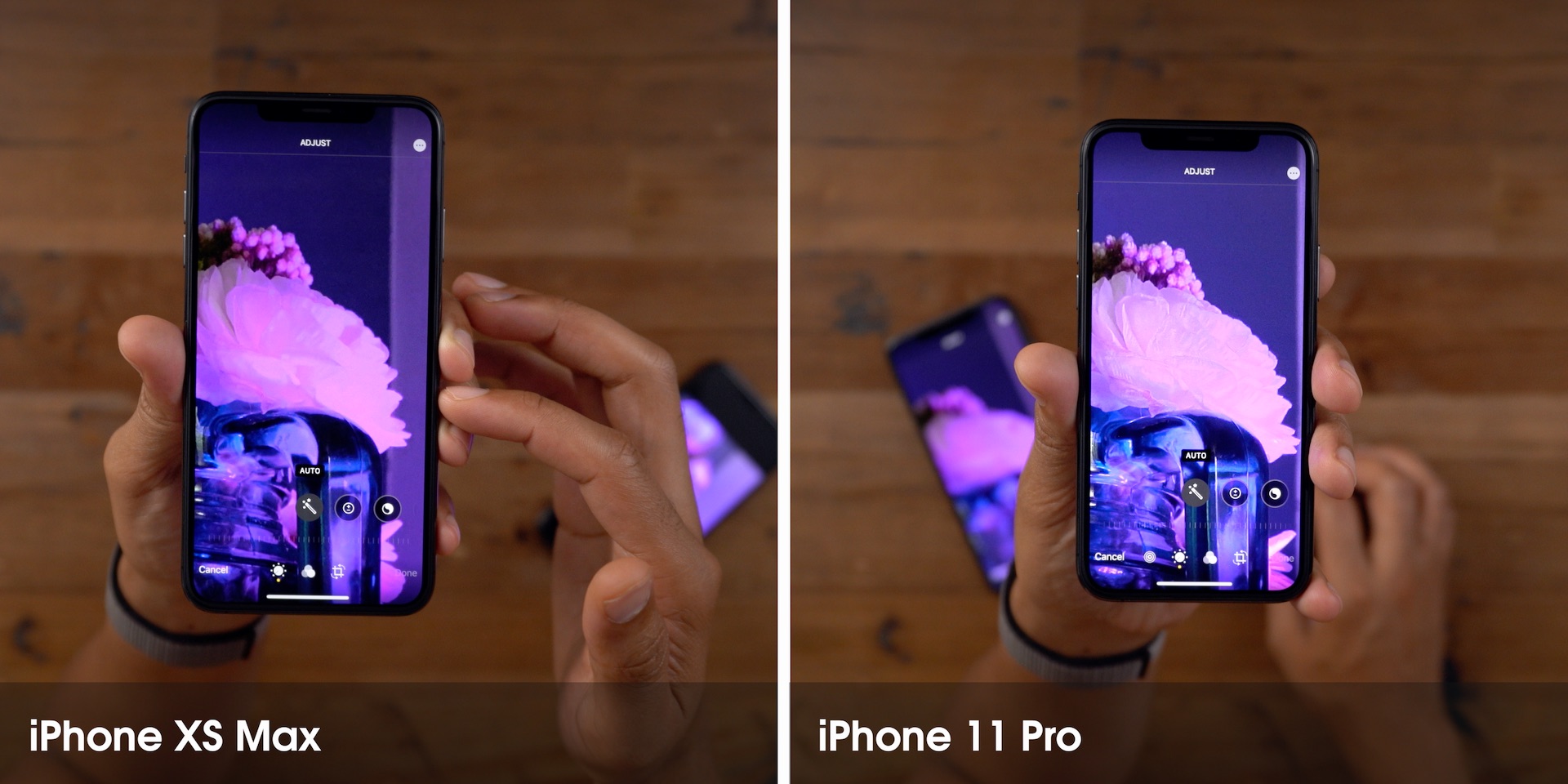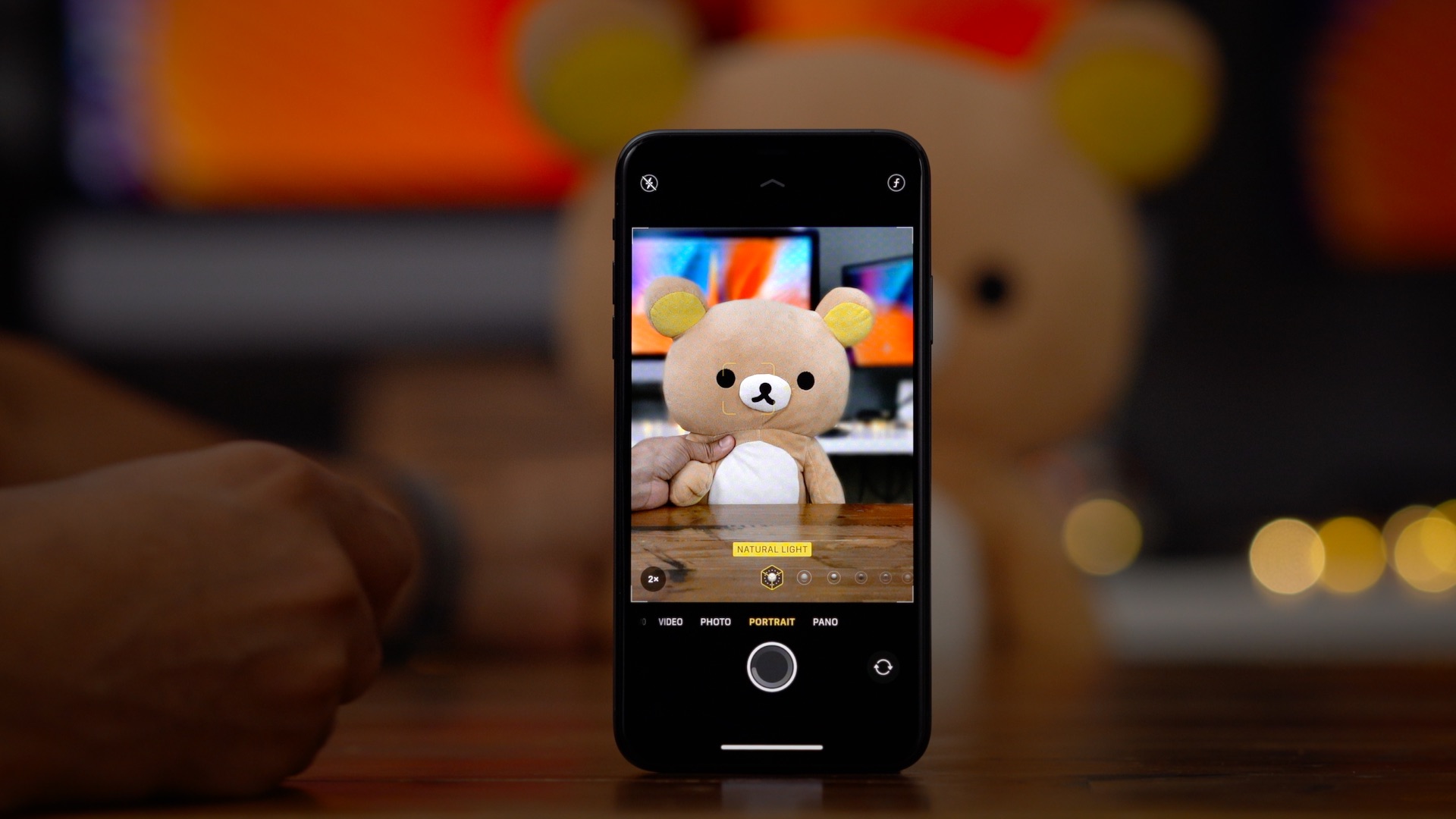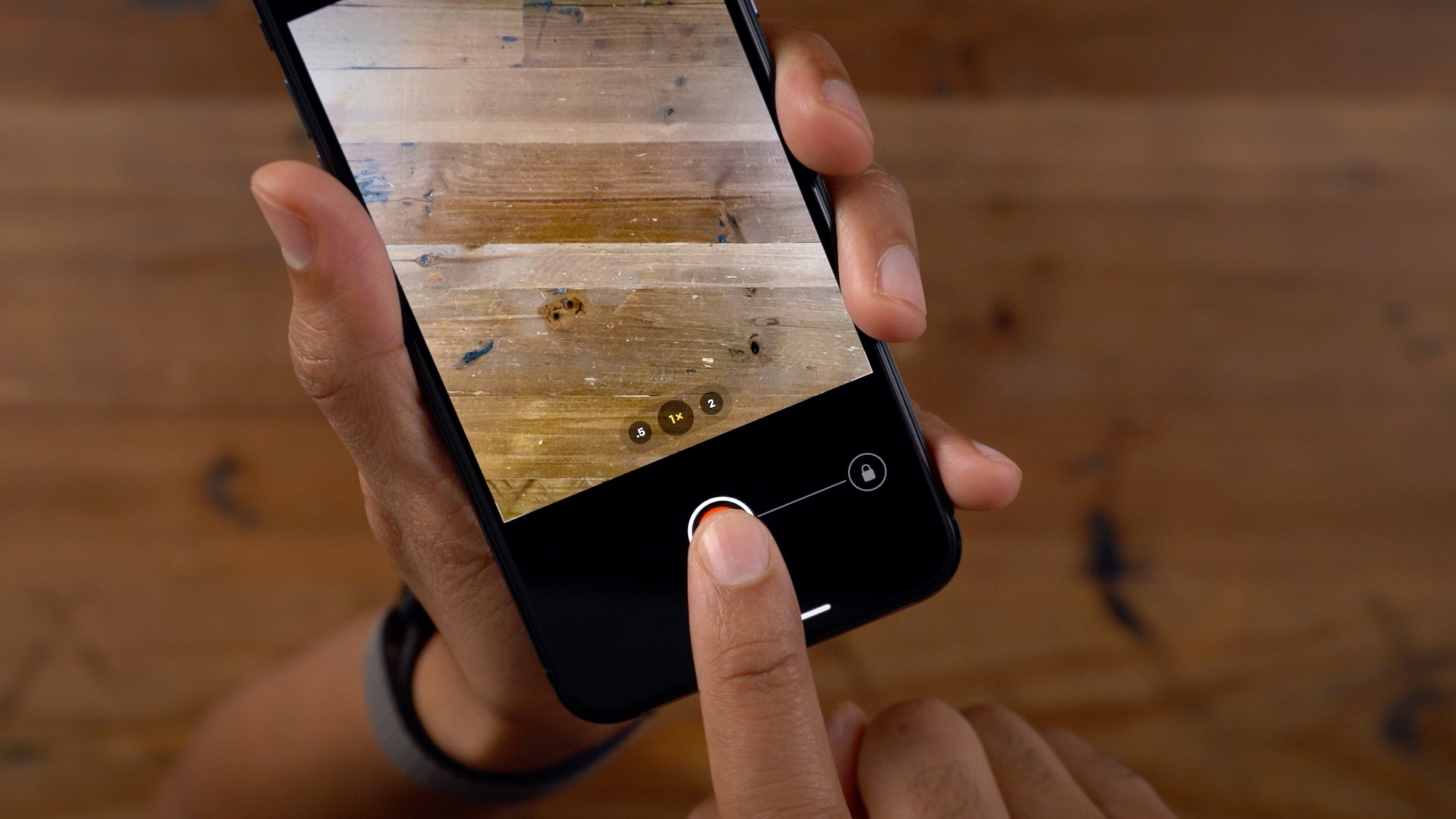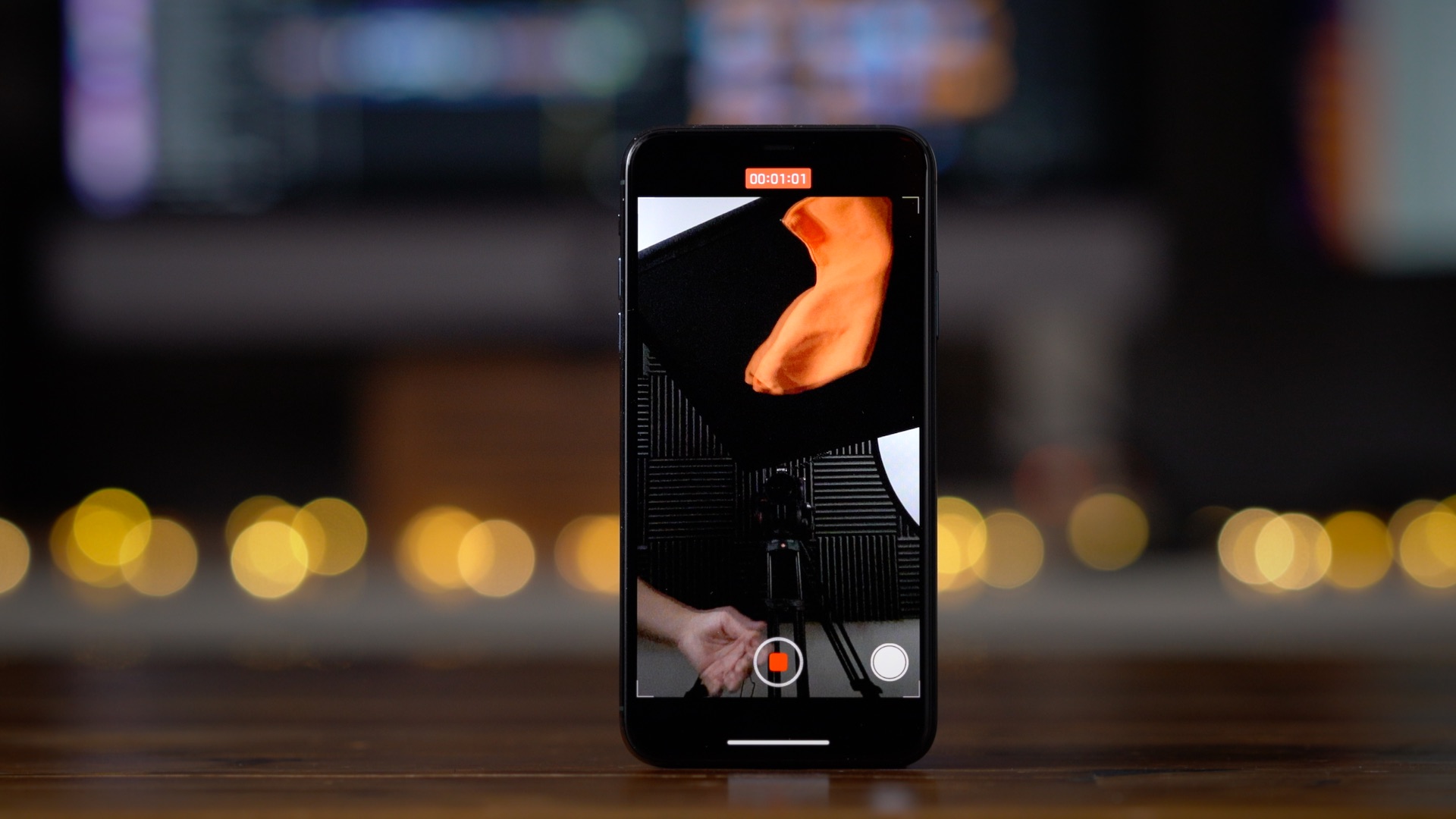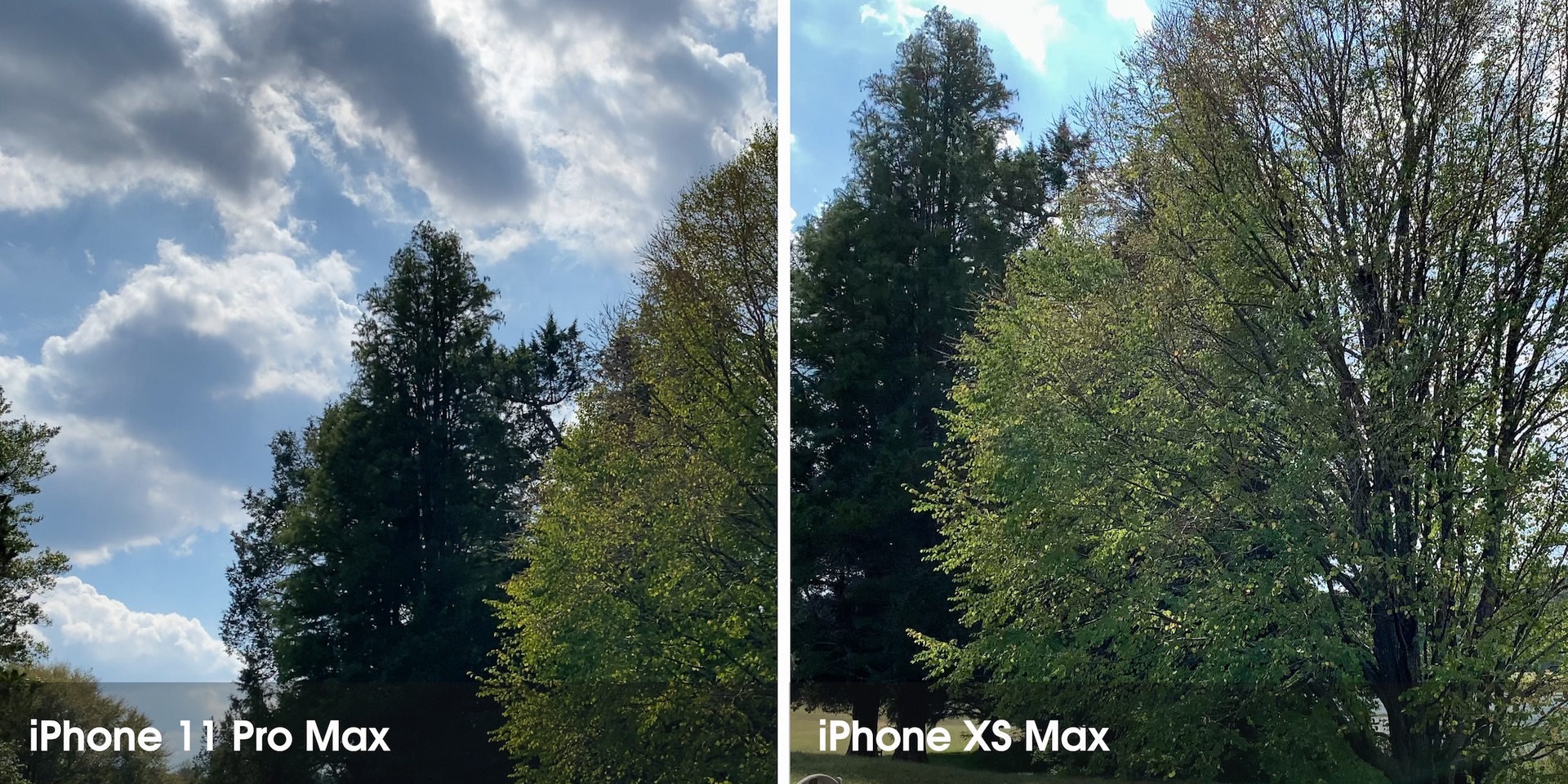
The iPhone 11 Pro is a moderately more expensive version of the baseline iPhone 11, but instead of a dual camera array, it features a triple camera setup that includes a telephoto lens. The addition of a faster telephoto lens can make a noteworthy difference for mobile photographers and videographers.
The Pro version of the iPhone 11 also comes with a sleek new matte finish, an 18W power adapter for fast charging, and an enhanced Super Retina XDR display, which happens to be perfect for Dark Mode in iOS 13. Watch our hands-on video walkthrough as we showcase some of the top iPhone 11 Pro features, and be sure to subscribe to 9to5Mac on Youtube for more iPhone videos.
High-end iPhone models have been available in the typical boring space gray, silver, and gold color options for years now, so it’s nice to see a color like Midnight Green come out of left field.
In well-lit environments, you can definitely tell that the surface on the iPhone 11 Pro is green, but in lower light the surface almost looks like space gray. Combined with the three-camera array and green-tinted stainless steel band around the perimeter, it’s a look that screams business.
Like the baseline iPhone 11, the iPhone 11 Pro comes with a rear glass area that features a mix of matte and glossy surfaces.
The iPhone 11 Pro swaps the arrangement of the surfaces found on the iPhone 11, swapping the glossy rear surface for a matte surface, and swapping the matte camera module for a glossy camera module.
The matte glass surface feels more like the aluminum back found on the iPhone 5-era phones, lending a unique and almost frosted look to the finish underneath the glass.
18W fast charger in the box
As I’ve lamented about countless times before, previous iPhone releases have been stuck with a measly 5W power adapter since forever. Even the baseline iPhone 11 ships with a 5W adapter, despite its ability to fast charge to 50% in under 30 minutes. Thankfully, the iPhone 11 Pro comes with a new fast-charge-capable 18W power adapter, the same adapter included with the iPad Pro.
Super Retina XDR display
The Super Retina XDR display features the same 458 pixel density and resolution as its forerunners, the iPhone XS and XS Max, but there are definite enhancements to be found here.
The iPhone 11 Pro Super Retina XDR OLED display sports a contrast ratio of 2,000,000:1 versus the 1,000,000:1 contrast ratio on the iPhone XS Super Retina HD display.
There’s also enhanced max brightness levels on the iPhone 11 Pro. Compared to the iPhone XS Max, which featured a max brightness of 625 nits, the iPhone 11 Pro sports a max brightness of 800 nits in typical bright conditions. This increased brightness is handy when using your phone outdoors in sunlight, as it can make the display easier to see.
Additionally, there is a second brightness level found on the iPhone 11 Pro. The Super Retina XDR display can venture up to a whopping 1200 nits when playing back 4K HDR movies or when viewing HDR photos.
Even with these enhancements in mind, the new display on the iPhone 11 Pro is up to 15% more efficient than the Super Retina HD display on the iPhone XS, lending to the device’s huge leap in overall battery life.
Dark Mode
While Dark Mode is an iOS 13 feature that’s available on older iPhone models, it looks best on the iPhone 11 Pro. Thanks to the device’s OLED display and increased contrast ratio, there is no better way to experience the flagship feature of iOS 13.
Three new live wallpapers
I wasn’t impressed with the live wallpapers found on the baseline iPhone 11, which featured a theme similar to Apple’s most recent event invite. The iPhone 11 Pro live wallpapers, with their wave-like design, are much more appealing.
A13 Bionic
The A13 Bionic features a noteworthy speed increase over its A12 predecessor, allowing for first-time features like shooting 4K video at 60 frames per second in extended dynamic range. But it’s the machine learning improvements and battery-saving efficiency enhancements that stand out the most.
Along with the Super Retina XDR display’s efficiency improvements, both the CPU, GPU and 8-core Neural Engine see significant efficiency gains ranging from up to 15% all the way up to 40%. It’s just one of the reasons why the iPhone 11 Pro is able to gain 4-5 hours of battery life over the iPhone XS.
U1 Ultra Wideband and chip
The U1 Ultra Wideband chip found in the iPhone 11 and iPhone 11 Pro brings spatial awareness that’s been described as a sort of GPS at a home level. The chip, which is brand new to this year’s crop of iPhones, brings forth spatial awareness, allowing the device to understand its precise location in relation to other U1-equipped devices.
Despite how promising that sounds for the future, there’s currently not much in the way of real world examples of the U1 chip in action. The new AirDrop sharing functionality found in iOS 13 is all we get at this stage in the game, which surfaces nearby U1-enabled devices above all other AirDrop candidates.
Improved battery life
Apple says that users should expect an increase of up to 5 additional hours of battery life for its flagship release, which is a massive improvement over its predecessor.
It means that the iPhone 11 Pro Max surpasses last year’s iPhone XR — the previous king of iPhone battery life — along with this year’s baseline iPhone 11, which received a modest 1 hour of battery life increase over the iPhone XR.
Improved water resistance
The base model iPhone 11 touts improved water resistance, going from just 1 meter maximum depth on the iPhone XR to a maximum depth of 2 meters for up to 30 minutes. But the iPhone 11 Pro doubles the depth rating of the iPhone 11, allowing for a maximum depth of 4 meters for up to 30 minutes.
Triple camera array
As I noted in my iPhone 11 Top Features video, the camera housing on the new iPhones looks a lot better than I imagined it would. And although we appreciate the dummy models that seem to surface each year, they failed to capture the amount of detail and care that Apple put into the look of the iPhone 11 Pro.
The new triple camera array features wide, ultra wide, and telephoto lens options. There’s also a microphone, and a 36% brighter True Tone flash included on the rectangular module.
What’s most impressive about the triple camera array is how well each of the cameras work together as if you were working with a single zoom lens. Because each sensor is different, Apple went through painstaking detail to ensure that all were calibrated in such a way so that white balance and exposure matched as closely as possible.
Although it’s possible to tell the differences between the three cameras if you look closely, it’s more or less a seamless affair, and speaks to the attention to detail that Apple paid to make shooting photos and videos with the iPhone 11 Pro as cohesive as possible.
12MP wide angle camera
The wide angle camera on the iPhone 11 Pro is the workhorse of the three cameras. The 26mm wide angle camera comes with the same f/1.8 aperture found on its predecessor, but it now features a new 12MP sensor with 100% Focus Pixels for better focusing performance and low light capability.
12MP ultra wide camera
The iPhone 11 Pro features the same 13mm f/2.4 ultra wide 12MP camera with 120 degree field of view found in the baseline iPhone 11. Alongside its sibling, it marks the first time that we’ve seen an ultra wide camera in an Apple smartphone.
Having access to such a wide focal length adds significantly more creative options for photographers and videographers.
The ultra wide camera, while not suitable for low light or run and gun photography, due to its slow aperture and lack of OIS, is ideal for shooting landscape photos and videos.
12MP telephoto camera
The iPhone 11 Pro features a faster telephoto lens than the one found on its predecessor. The iPhone XS came with an f/2.4 telephoto lens, while the 52mm telephoto camera on the iPhone 11 Pro features a considerably faster f/2.0 aperture that captures 40% more light than before.
Such a change translates into having more milky background blur when taking photos of close up subjects, and better performance in low lighting conditions.
12 MP TrueDepth Camera
Perhaps the biggest year-over-year upgrade when it comes to optics is the front-facing TrueDepth Camera found on the iPhone 11 Pro.
While featuring the same f/2.2 aperture, the TrueDepth Camera goes from a 7MP camera to a 12MP camera that makes for significantly higher resolution photos and videos.
The TrueDepth Camera on the iPhone 11 Pro also enjoys a wider focal length of just 23mm (35mm equivalent). This is compared to the 32mm focal length on the iPhone XS.
The camera uses digital zoom automatically when shooting selfies in portrait mode, but reverts back to its native focal length when placing the phone into landscape mode. This feature, called Auto Zoom, is ideal for capturing groups of people. Of course, users are able to manually adjust the zoom using the zoom button on the selfie interface as well.
Redesigned Camera app
Both the iPhone 11 and its Pro variant gain an enhanced default camera app to take advantage of this year’s new camera features. Most notably, the Camera app has been designed to seamlessly integrate multiple cameras together into one cohesive experience.
The iPhone 11, with its two cameras, benefits from the Camera app upgrade, but especially does the iPhone 11 Pro, with its three rear-facing shooters.
When shooting a photo with the telephoto lens, you’ll see the wide angle sensor data outside of the frame. Likewise, when capturing a photo with the wide angle lens, you’ll see ultra wide sensor data outside of the frame. iOS has an option that users can toggle in its Camera settings to capture this data outside of the frame for later use.
Along with subtle changes to the shutter button UI and camera font, you’ll find additional selections in Photo Mode when swiping up on the viewfinder. Swiping up reveals options for the flash, Night Mode, Live Photos, aspect ratio, timer, and filters.
Night mode
Flash photography oftentimes results in unnatural-looking photos, which means I almost always omit using it. Night Mode makes taking flash-less photos in dimly-lit environments more possible than ever before on an iPhone.

Without Night Mode or flash
Night Mode isn’t magic, as it doesn’t allow your iPhone to see in the dark, and it still requires a light source of some kind, but it can radically improve shots in low-light without having to rely on the flash.
By using a long exposure combined with machine learning enhancements, Night Mode allows users to capture low light photos with less noise and more detail than on previous iPhones.

With flash
One of the great things about Night Mode is that it’s completely automatic. When your iPhone senses that there is a lack of light, Night Mode just comes on. Of course, it’s possible to manually enable or disable Night Mode, but most users won’t need to worry about it.

With Night Mode
Night Mode takes multiple photos and intelligent software combines those shots into a single photo. It automatically omits portions of the photo with too much blur stemming from camera movement, while maintaining sharper areas. Night Mode also adjusts contrast and colors and reduces noise to produce a more natural looking final product.
Enhanced Smart HDR
Smart HDR on iPhone 11 Pro now uses machine learning to relight faces it recognizes in your shots, while automatically adjusting shadow and highlight details. It’s perfect for capturing photos with a wide range of dynamic shadows and highlights. Apple thinks Smart HDR is so good on iPhone 11 Pro that there’s no longer an option to keep the non-Smart HDR photo when the option is enabled.
Enhanced portrait mode
Portrait Mode, courtesy of iOS 13, comes with new features like the High-Key Light Mono effect, and the ability to change the position of lighting via a new Portrait Lighting Control slider.
With the addition of an additional camera, the iPhone 11 Pro gains the ability to shoot Portrait Mode photos using either the wide angle camera or the telephoto camera.
4K60 Video on all four cameras
The iPhone 11 Pro features support for 4K at 60 frames per second video capture on not just one or two of its cameras, but on all four cameras including the front-facing TrueDepth camera.
Audio Zoom

Water sounds further away when zoomed out
The microphone next to the three cameras on the rear rectangular housing can now “zoom” in to capture audio data to match the zoom of the camera. It means that sounds will get louder as you zoom closer to subjects projecting noise.

With Audio Zoom water sounds closer
QuickTake video
The redesigned Camera app comes with a new feature called QuickTake Video that allows users to capture video on the fly while in Photo capture mode. To take a video, simply tap and hold the shutter button, and video capture will immediately begin. To stop capture, just release the shutter button.
If you’d like to take a longer video while in Photo mode, swipe right towards the lock indicator while capturing using QuickTake. Keep in mind that video shot while in Photo mode will be captured at a lesser resolution (1920×1440 30fps) with a 4:3 aspect ratio when compared to 16:9 videos shot in dedicated video mode. Even if you switch the Photo mode aspect ratio to 16:9, it will still only capture video at 1920×1080 at 30fps. For that reason, you should only use QuickTake Video when you need to quickly capture a video in the heat of the moment.
Slow motion selfies
In addition to the ability to take 4K videos at 60 frames per second with the front-facing TrueDepth Camera, the iPhone 11 Pro can capture selfies in slow motion at 120 frames per second in full HD.
4K60 cinematic video stabilization
Previous iPhones supported 4K30 cinematic video stabilization, but the latest crop of iPhones boost support up to 4K60. The difference between stabilized footage and non-stabilized footage is jarring. Be sure to watch our video walkthrough embedded above for a demonstration.
60fps extended dynamic range
When shooting video in extended dynamic range, your iPhone is actually capturing double the frames, alternating between standard and short exposure in order to capture the most detail. Previous iPhone models could only do so with video shot up to 30 frames per second, doubling the amount of captured frames to 60 fps. With 60fps video capture on the iPhone 11 Pro, your iPhone is actually capturing at 120 fps, which requires an insane amount of processing power on the part of the A13 Bionic system on a chip.
The iPhone 11 Pro and iPhone 11 Pro Max are luxury items that take the video and photo capabilities of the baseline iPhone 11 a few steps further. The inclusion of the Super Retina XDR OLED Display, along with the triple camera module help the higher priced iPhone live up to its moniker. But is it truly worth purchasing at such a price premium over the standard iPhone 11? Stay tuned for our full review for the answer.
Author: Jeff Benjamin
Source: 9TO5Mac



